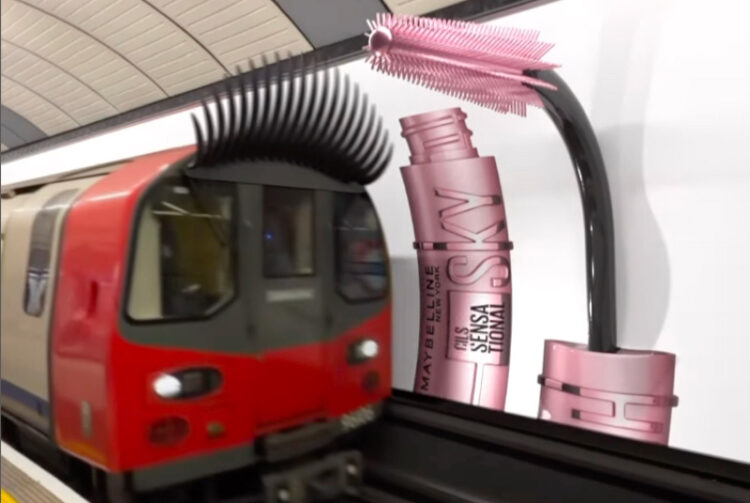Opinion: Strategy Leaders
Faux OOH could complement Foundational and Special OOH activations, but it’s not quite the same thing in some powerful, if subconscious, ways.
As a media planner by background, I’ve been watching the “Faux OOH” debate unfolding this summer quietly murmuring, “yes, but what’s its role on the plan in the first place?”
So, if you’ll forgive me I wanted to take the chance to share a few thoughts here.
The first thing to say is that not all out-of-home (OOH) is equal, and so it can be helpful to differentiate between different “types” of OOH. For want of a better term, there is “Foundational OOH” and there is “Special OOH” and they often have different roles on a plan.
Faux OOH won’t impact the bedrock OOH use case
Foundational OOH is the absolute bedrock of most OOH plans. It puts your message in a deliberately public place and reaches a lot of people going to work, out and about and generally going about their lives.
People usually process it quickly and on the move (there are exceptions, like cross platform tube advertising intended for longer dwell times).
It’s simple to plan, runs in multiple places, provides flexible formats and can be particularly helpful for targeting particular localities and locations. Due to the rise of digital OOH (DOOH) in recent years, it’s increasingly agile, too.
Just as important as all of this is the subconscious signals that Foundational OOH sends out to people without them ever really processing it.
You or I or anyone else can walk past the same poster knowing that it hasn’t been tailored for or specifically targeted to any of us, and that it will be seen and overseen by thousands of people. Subconsciously, this means that we can (generally) both trust the message and the company behind it.
People are usually very good intuitive consumers of media and on some level recognise that spending money on posters and putting a message in front of a lot of people at the same time is generally only done by companies who are likely to be around for a while and who are confident in what they have to say.
This is the absolute bedrock of OOH and I would expect Faux OOH to have very little impact on it.
And then there’s “Special OOH” — literally the bit of the excel spreadsheet that might come under the word “Specials”.
The deal with “Specials” is that you accept they are much less efficient to buy but trade that off against their potential impact. Of course, a big part of that impact is the direct impact of people who will see your special “IRL” on the street, but a big reason for doing “Specials” has always been in the hope that they will stand out enough and have enough impact to be picked up in earned media — traditionally by the press, but of course increasingly on social media too.
It’s where paid media crosses over, delightfully, with PR. It’s why brands have been floating things down the Thames for years. It’s why Nike put projections of the England Women’s football team on Battersea Power Station and Tower Bridge before the World Cup. It’s why Sony changed the logos on The Oxo Tower to the iconic Playstation symbols.
But can it replace Special OOH?
The question for me is, can and will this “Special” OOH be replaced by Faux OOH? To which my answer is (perhaps underwhelmingly), maybe; sometimes, perhaps not as often as you might think as they’re still slightly different things.
Much like OOH “Specials”, Faux Outdoor is intended to make an impact, capture the imagination and get talked about. There are lots of examples from this Summer (very well covered elsewhere) that have done exactly that.
But I suspect what might happen is that as technology and creativity evolve (and perhaps as a bit of the novelty wears off) the bar for what really cuts through will become higher and higher and many — but not all — Faux OOH attempts will fail to clear it. Much as the 18th thing floated down The Thames doesn’t work so well.
Don’t mislead people
The bigger question being asked is whether it really matters that Faux OOH doesn’t actually run in paid media.
I’m pretty relaxed about the principle and I suspect it’s very low down the list of things that keep a typical person up at night. But I would say that it’s generally not a good thing for brands to deliberately and wilfully mislead people.
There’s a big difference between having a bit of fun showing off the creativity of fans or people you’re collaborating with, and deliberately sending out press releases claiming that something actually ran IRL when it didn’t.
So yes, Faux OOH can do much of what OOH “Specials” can do, but it’s not quite the same thing in some powerful if subconscious ways.
I wouldn’t be at all surprised to see Faux OOH starting to be added to more OOH plans (alongside Foundational and Specials) but I suspect it will end up as an enhancement rather than a replacement.
David Wilding is a media strategist and advisor, founder of DR Wilding Strategy & Consulting, and former director of planning at Twitter UK.
Adwanted UK is the trusted delivery partner for three essential services which deliver accountability, standardisation, and audience data for the out-of-home industry.
Playout is Outsmart’s new system to centralise and standardise playout reporting data across all outdoor media owners in the UK.
SPACE is the industry’s comprehensive inventory database delivered through a collaboration between IPAO and Outsmart.
The RouteAPI is a SaaS solution which delivers the ooh industry’s audience data quickly and simply into clients’ systems.
Contact us for more information on SPACE, J-ET, Audiotrack or our data engines.




